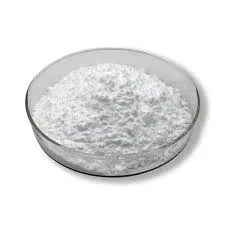
Oct . 08, 2024 11:21 Back to list
Exploring HPMC as a Versatile Excipient in Pharmaceutical Formulations and Applications
The Role of HPMC as an Excipients in Pharmaceutical Formulations
Hydroxypropyl Methylcellulose (HPMC) is a versatile and widely used polymer in the pharmaceutical industry, particularly as an excipient. Excipients are inactive substances that serve as a vehicle or medium for the active ingredients in a drug formulation. HPMC, a derivative of cellulose, possesses unique properties that make it an essential component in various pharmaceutical applications.
The Role of HPMC as an Excipients in Pharmaceutical Formulations
In addition to its thickening capabilities, HPMC acts as a film-forming agent. This is particularly advantageous in the creation of coated tablets. The film formed by HPMC can control the release of the active ingredient, thereby contributing to sustained or modified release systems. This controlled release is crucial for improving the bioavailability of certain drugs and minimizing side effects, as it helps maintain therapeutic levels of the drug in the bloodstream over an extended period.
hpmc excipient

Another significant application of HPMC in pharmaceuticals is its role as a binder in solid dosage forms. During tableting processes, HPMC enhances the cohesion of powder particles, which is essential for producing tablets with good mechanical strength. This attribute is particularly important for ensuring that the tablets can withstand transportation and handling without breaking or crumbling. Furthermore, HPMC's ability to retain moisture can help maintain the stability and integrity of solid dosage forms.
Moreover, HPMC is utilized in formulations for modified-release oral dosage forms. The hydrophilic nature of HPMC allows for the creation of matrix systems that can regulate drug release rates. By controlling the dissolution rate of the active ingredient, HPMC can significantly improve patient compliance by reducing the frequency of dosing. This feature is particularly beneficial for medications that require constant blood levels for optimal effectiveness.
In recent years, the demand for natural and safe excipients has surged, and HPMC fits this requirement well. As a non-toxic polymer derived from natural cellulose, it is generally recognized as safe (GRAS) and is widely accepted in various pharmaceutical formulations. This characteristic, combined with its versatility, makes HPMC a preferred choice among formulators.
In summary, Hydroxypropyl Methylcellulose is an essential excipient in the pharmaceutical industry, with multiple roles that enhance drug formulations. From acting as a thickening and film-forming agent to serving as a binder and enabling controlled drug release, HPMC significantly contributes to the development of efficient and effective pharmaceutical products. As research and development continue, the application of HPMC is likely to expand, reinforcing its importance in the world of medicine.
-
Versatile Hpmc Uses in Different Industries
NewsJun.19,2025
-
Redispersible Powder's Role in Enhancing Durability of Construction Products
NewsJun.19,2025
-
Hydroxyethyl Cellulose Applications Driving Green Industrial Processes
NewsJun.19,2025
-
Exploring Different Redispersible Polymer Powder
NewsJun.19,2025
-
Choosing the Right Mortar Bonding Agent
NewsJun.19,2025
-
Applications and Significance of China Hpmc in Modern Industries
NewsJun.19,2025







